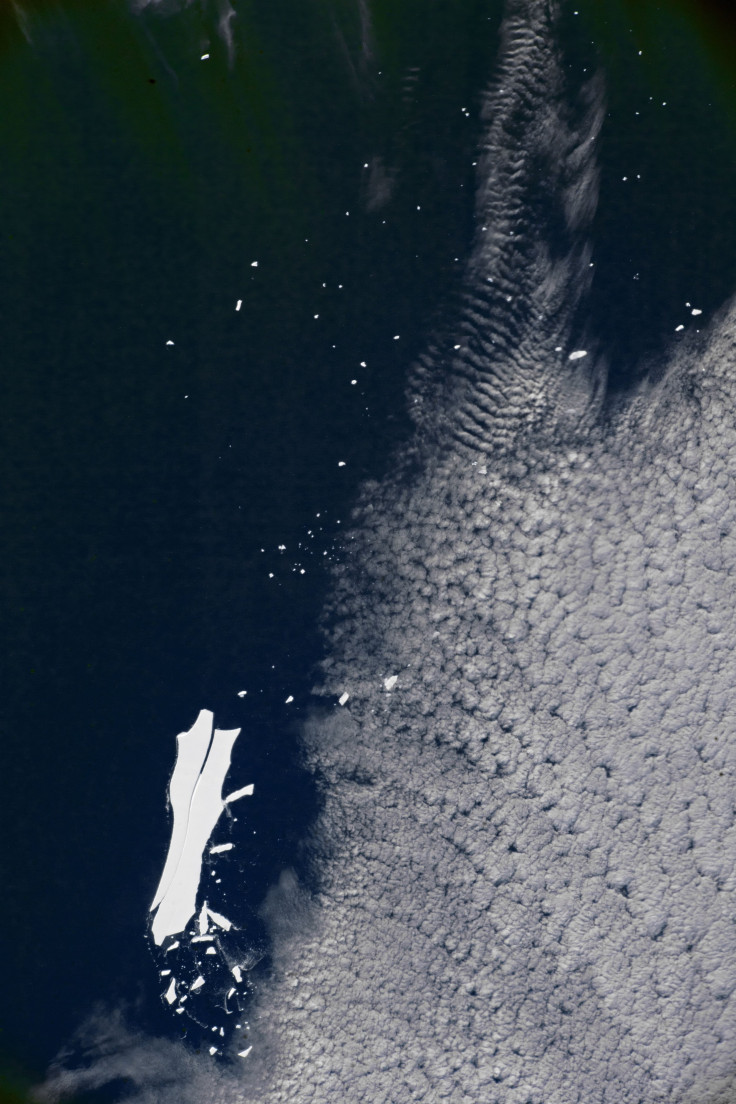Largest Ever Iceberg Recorded In Antarctica Disappearing, Photograph By ISS Astronaut Shows

The largest-ever iceberg recorded in Antarctica, B-15, is heading towards its death, NASA’s Earth Observatory has revealed in a new release.
More than 18 years ago, in March 2000, B-15 detached from the Ross Ice Shelf of the continent. Back then, it was insanely humongous, however, the numerous fractures and melting events that occurred over these years has taken the berg closer to the end of its journey.
As NASA stated, when the iceberg first broke away, it was nearly as big as the state of Connecticut, covering a whopping 4,250 square miles or 11,000 square kilometers in area. It drifted away with ocean current, but thanks to warming and a regular battering from wind and sea, the giant icy formation broke into smaller pieces, most of which melted with time.
Today, just four pieces big enough to be tracked by the U.S. National Ice Center are left and even those are on the verge of breaking further and melting away.
An astronaut from the International Space Station (ISS) captured a photograph last showcasing the condition of a part of the berg named B-15Z. It currently spans around 65 square miles (170 square kilometers) and can be tracked in the near future, with minimum size required for tracking being 26 square miles. However, the situation of the formation doesn’t look good for long-term survival.
As seen in the image, taken by a member of the Expedition 54 crew and enhanced later, several tiny pieces are breaking away from the sides of the berg, while a big long fracture running along the center. That said, noting the incredibly long journey, more than 10,000 kilometers from the ice shelf over 18 years, and current course of the remaining pieces, NASA posits that they will soon disappear forever.
In October 2017, B-15Z was in the Southern Ocean off the tip of the Antarctic Peninsula. Since then, it has drifted northwards into the Atlantic Ocean. The latest estimates indicate that it is moving toward warm pools of water near South Georgia islands. As this is incredibly close to the equator, the berg is expected to melt rapidly and die. NASA glaciologist Kelly Brunt had previously said the bergs at such points “tend to pond with water, which then works its way through the iceberg like a set of knives.”
© Copyright IBTimes 2025. All rights reserved.





















